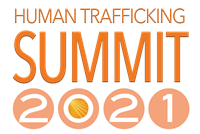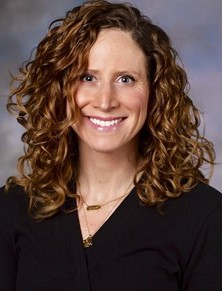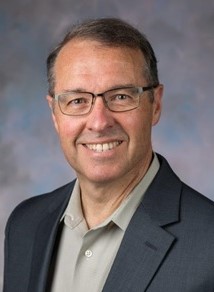Nationwide Children’s doctors share their experiences in 2021 keynote
The first child victim of sex trafficking seen by
Dr. Jennifer Tscholl was neither grateful to have been saved by the FBI agents on her case, nor ready to admit that she had been victimized.
“In my mind, I was envisioning what the movies show — like they rescued this child, and she is being brought here and is going to be so thankful,” said the child-abuse pediatrician who works at Nationwide Children’s Hospital’s Center for Family Safety and Healing.
“But I couldn’t have been further from reality,” Tscholl said, “because this child was very distrustful. She wanted nothing to do with any of the people who were there.”
The long line of trafficking-related patients she has treated since has driven home the fact that they don’t easily self-identify as victims. Much like women suffering domestic violence or children who have been sexually abused, trafficking victims aren’t typically forthcoming about what is happening; they need time to realize they want help, said Tscholl, who will share her insights this month at the Attorney General’s second annual Human Trafficking Summit.

Ohio Attorney General Dave Yost’s Human Trafficking Summit
What: Online experience with three feature presentations and 15 workshop options
When: 8:45 a.m. - 4 p.m. Jan. 14, 2021
Cost: $10
Register: www.OhioAttorneyGeneral.gov/ Human-Trafficking-Summit


Dr. Tscholl Dr. Kelleher
At the Center for Family Safety and Healing — housed in the same building as special units of the Columbus Division of Police and Franklin County Children Services — Tscholl’s team works to mitigate the risk for kids who, mostly, don’t say they experience human trafficking but show a significant number of vulnerabilities.
Those red flags may include a history of substance use, running away, multiple sexual partners and sexually transmitted infections.
“When we talk to trafficking survivors when they are identified later in life, most of them say that they started doing this when they were still children, so we know we have the opportunity to identify these kids earlier,” Tscholl said. “Studies have found that 88% of victims say they were brought in for medical care during their period of exploitation.”
The Center for Family Safety and Healing is developing special screenings and other methods to help medical professionals recognize the plight faced by such children, even if they’re just in for regular checkups. Tscholl said the center is also working on how to build trust and do right by these young patients.
Dr. Kelly Kelleher sees the need. He is a pediatrician at Nationwide Children’s Hospital’s Abigail Wexner Research Institute who studies young people at risk of behavioral and mental health issues.
“We have to come up with new solutions,” he said. “The alternative is people end up on the streets using drugs, being trafficked and with very high rates of suicide. As a result, we end up with more people dead and more people in prison — and that doesn’t even count the health consequences that Jennifer deals with.”
Kelleher, who will take part in the summit’s keynote presentation with Tscholl, came to work on human trafficking after a research interest in prisons led him to homeless youth and foster kids.
“For me, it’s a research project and a public advocacy issue because it’s such an important topic,” he said. “So many of these children are coming from trafficking situations or being solicited for trafficking.”
Kelleher is running a large, randomized study seeking to determine whether providing housing to young people (ages 18-24 because they must be old enough to sign home-rental contracts) helps them avoid using drugs and being trafficked. He hopes to secure a grant for his next study topic: runaway intervention.
Both homeless and runaway youths are at extreme risk of falling victim to sex trafficking.
“So many people think of trafficking as moral failings,” Kelleher said. “Moral failings of the johns on the street, moral failings of people trafficking somebody and also of the young people themselves. But in reality, this is a system problem. This is about how we treat people. ... This is about what we do when our education system fails them, when our foster care system doesn’t move them on to the next step.
“These are systemic issues that people with influence and policymakers have the opportunity to change,” he said.
Tscholl agreed and said systems and communities need to expand their understanding of human trafficking.
“Thinking it’s only kids who don’t have parental support who face a trafficking risk is misguided,” she said. “All kids have some kind of vulnerability, especially teens who really want to fit in at this time of their life, and traffickers will exploit that.”
During their presentation, the doctors expect to address human trafficking myths, including how victims become involved in trafficking. Preventing a problem, after all, depends on truly understanding how it happens and how it continues.
“The way that myths propagate across communities — you see people saying on social media, ‘I was at a store and there was someone clearly following me, and they were trying to take my young child to traffic them’ — people think they should look out for a kidnapper van,” Tscholl said. “I’m not saying kids don’t get kidnapped — these stories are concerning in their own right — but having people across communities only worried about strangers kidnapping their children doesn’t help prepare families to monitor what the trafficking risks actually are.
“It’s not going to help us prevent kids from becoming victims if families and children don’t know that the overwhelming majority of victims know their traffickers.”